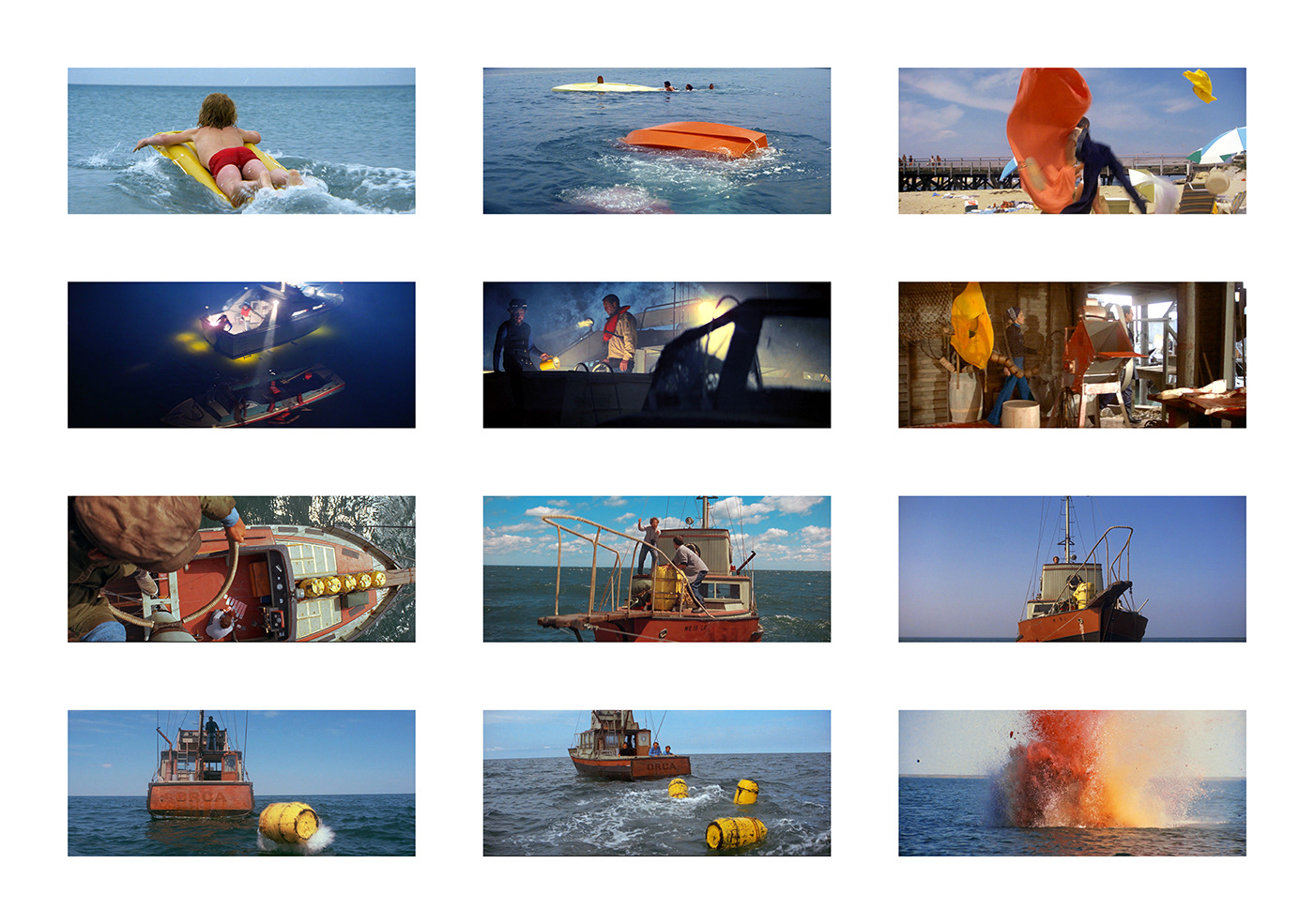Who’s Afraid of Red, Yellow and Blue is a video composed of scenes from the movie Jaws (1975) by Steven Spielberg, where the three primary colors red, yellow, and blue appear simultaneously. The video is edited in the narrative order of the original film, starting with the opening in the peaceful home of the family, followed by scenes in the town, on the beach, and ending at sea with the killing of the shark.
Who’s Afraid of Red, Yellow and Blue refers to Barnett Newman's work of the same title, a series of four large-format paintings created between 1966 and 1970. The title of the paintings was a provocation in the discourse of abstract painting at the time, aiming to liberate color from its merely didactic use and to showcase color expressing itself. Two of Newman’s paintings were subjects of vandalism in museums: in 1982 at the National Gallery in Berlin and in 1986 at the Stedelijk Museum in Amsterdam.
In both cases, as with the painting and in Jaws, the events lead to destruction: the iconoclast destroys the painting, and the shark is blown up. In Jaws, the shark, as the embodiment of the threat, remains invisible beneath the surface of the sea. Newman's painting confronts the viewer with their own experience in the emptiness of the color space. How does society and media deal with fear, what are real and what are projected threats, and how do we negotiate these in relation to nature, politics, and culture?
The stamps are an extension of the video work, showing the final scene of the movie where the shark explodes, were printed through the Korea Post service. A second photo shows an open mouth and a single postal stamp with the same movie still lying on the tongue. In the context of the Covid-19 pandemic, the idea of a postage stamp being moistened by"body fluids inevitably triggers the notion of a potential danger of contamination. Who’s Afraid of Red, Yellow and Blue let's us think about our relationship with nature and the possible risks of other pandemic outbreaks in the future caused by factory farming, wildlife exploitation and habitiat loss.

exhibition view, Signals, Eunam Museum, Gwangju, 2021

photograph, 40 x 50 cm, color, 2021

Korea postal stamps color, 2021

photograph with film stills, 2015

photograph with film stills, 2015
When Barnett Newman's painting Who's Afraid of Red, Yellow and Blue IV was acquired by Berlin's Nationalgalerie in January 1982, art experts established that the painting causes anguish and the certain press produced cheap propaganda complaining about the high price, tax payers money, and its low artistic value due to just showing three colors.
The picture was heavily damaged on April 13, 1982 by a veterinary student who, according to the Berlin daily Bild Zeitung, claimed to have felt fear and felt so overpowered by it that he had to defend himself.
The student who destroyed the picture signed his deed 'Aktionskünstler, ein kleiner Beitrag zur Sauberkeit' ('Action-artist, a small contribution to purity'). He said he was convinced 'that Newman, had he been alive, would in some sense have shared my opinion. I feel that now, for the first time, the picture is really complete, because of what I have done.'
The picture was heavily damaged on April 13, 1982 by a veterinary student who, according to the Berlin daily Bild Zeitung, claimed to have felt fear and felt so overpowered by it that he had to defend himself.
The student who destroyed the picture signed his deed 'Aktionskünstler, ein kleiner Beitrag zur Sauberkeit' ('Action-artist, a small contribution to purity'). He said he was convinced 'that Newman, had he been alive, would in some sense have shared my opinion. I feel that now, for the first time, the picture is really complete, because of what I have done.'
Source: Peter Moritz Pickshaus, Kunstzerstörer, Hamburg, 1988